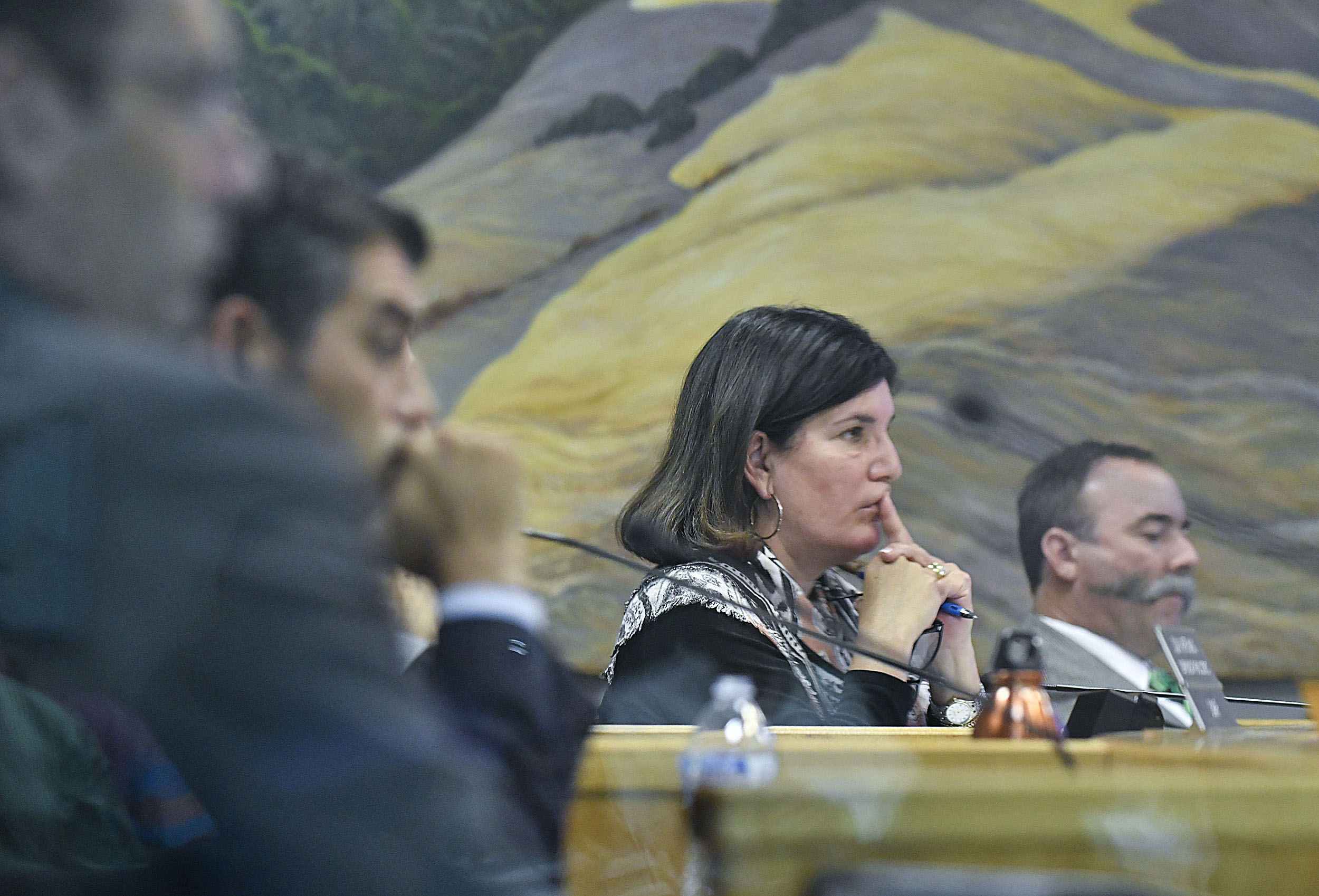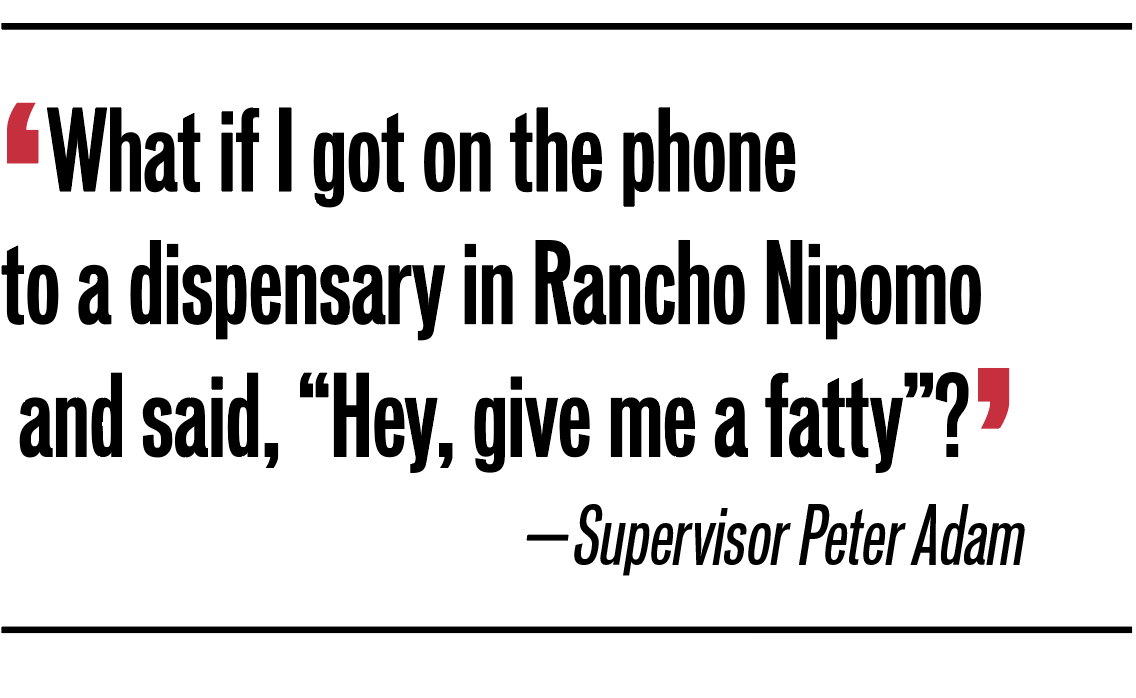There Will Be Bud: Santa Barbara Edition
County Supervisors Grapple with Pot Ordinance

If the devil’s in the details, Santa Barbara County will need to conduct at least a couple of exorcisms before its supervisors figure out what kind of ordinance they want to pass to dictate where the area’s burgeoning recreational marijuana industry can develop. Although there was significant disagreement over specifics at this Tuesday’s board meeting, it was clear that four of the five supervisors were committed to passing a county-specific ordinance.
When state voters approved Proposition 64 last year legalizing recreational marijuana, they gave local officials throughout California the latitude to pass enabling regulations of their own. If the supervisors stumbled along in congenial disharmony for about four hours, it’s in part because that task is dauntingly complex. It’s also the first time that all five supervisors collectively mulled the matter over.
In recent months, supervisors Das Williams and Steve Lavagnino have met behind closed doors as an ad-hoc task force no fewer than 13 times. That process aroused the procedural ire of fellow Supervisor Janet Wolf, the most wary of the pot industry of any supervisor. Giving the discussion a sense of urgency is the tight, state-imposed deadline the board is facing to get something approved. They’re shooting for a fleshed-out ordinance by February 2018. Adding fuel to the fire are the revenues the supervisors and county bean counters are expecting the cannabis trade to generate. Although no reliable numbers currently exist, some supervisors are privately salivating at the thought of $20 million–$30 million a year from the recreational pot trade.

The State Legislature has also passed a bill defining 17 separate cannabis-related activities that will require state licenses. In broad categories, these are cultivation, manufacture, distribution, testing, and retail sales. This Tuesday, the supervisors struggled to line up those 17 activities with the county’s menu of zoning options to determine what kind of businesses could be permitted and where.
Before getting down to that nitty-gritty, however, about 28 members of the public spoke their piece. Many knew each other, having testified a number of times on the same subject already. Residents from Tepusquet Canyon outside of Santa Maria showed up en masse to protest the influx of pot growers — 21 farms, according to one account — that have taken root in their small community. They complained about increased traffic, risk of fire, water use, bad neighbors, and the assault by pungent pot odors. A couple of speakers from Carpinteria, where traditional cut flowers grown in industrial greenhouses have been supplanted by lucrative marijuana harvests, likewise objected to the smells.
The pot growers showed up as well, cautioning the supervisors not to overtax or overregulate an industry that promises high-paying jobs and fiscal relief to a county government looking at serious budget shortfalls. One grower who’d recently moved from Los Angeles noted there were 2,000 dispensaries there, compared to 1,000 McDonalds and 1,000 Starbucks. In other words, get used to it; the demand is irresistible.
Throughout the meeting, Supervisor Wolf pushed repeatedly to expand the buffer between various pot enterprises and what have been dubbed “sensitive receptors” — daycare centers, schools, parks, and the like — from 600 feet to 1,000. For all her many efforts, she got nowhere. Supervisor Peter Adam, who runs a small agricultural empire, argued that the pot industry should be relegated to large agricultural parcels 40 acres in size or bigger. That would maximize production, he argued, while minimizing the aggravation experienced by individuals living in more urban areas. He also argued that no outdoor cultivation could be allowed near residential areas.
Supervisor Lavagnino, by contrast, argued that cultivation should be allowed on parcels as small as seven acres. If Adam’s proposal were enacted, he objected, most of Carpinteria’s booming greenhouse pot industry would be wiped out overnight. Supervisor Williams didn’t weigh in on the acreage requirements, but he insisted that strict odor controls be required on any operations interfacing with residential neighborhoods. He also argued that indoor pot operations pose potential fire risks. He suggested that the supervisors require that licensed electricians install the indoor lighting systems and that solar panels be required as well to offset the high energy demand.
Little agreement was likewise to be had on how many dispensaries should be allowed. Wolf thought maybe one or two would suffice. Adam suggested 10 to 20. Williams argued that delivery services were easier to rob and harder to regulate and should be curtailed. Adam suggested Williams was waging a futile fight “against technology.” Soon, he predicted, pot would be delivered via drone. What, if anything, he questioned, could the county do to regulate inter-county deliveries? “What if I got on the phone to a dispensary in Rancho Nipomo and said, ‘Hey, give me a fatty’?”
Though the supervisors couldn’t reach consensus, they disagreed agreeably. It being their first attempt, no action was expected, just general guidance. A more meaningful debate will take place in November after the environmental impact report and economic analysis are slated for release.


